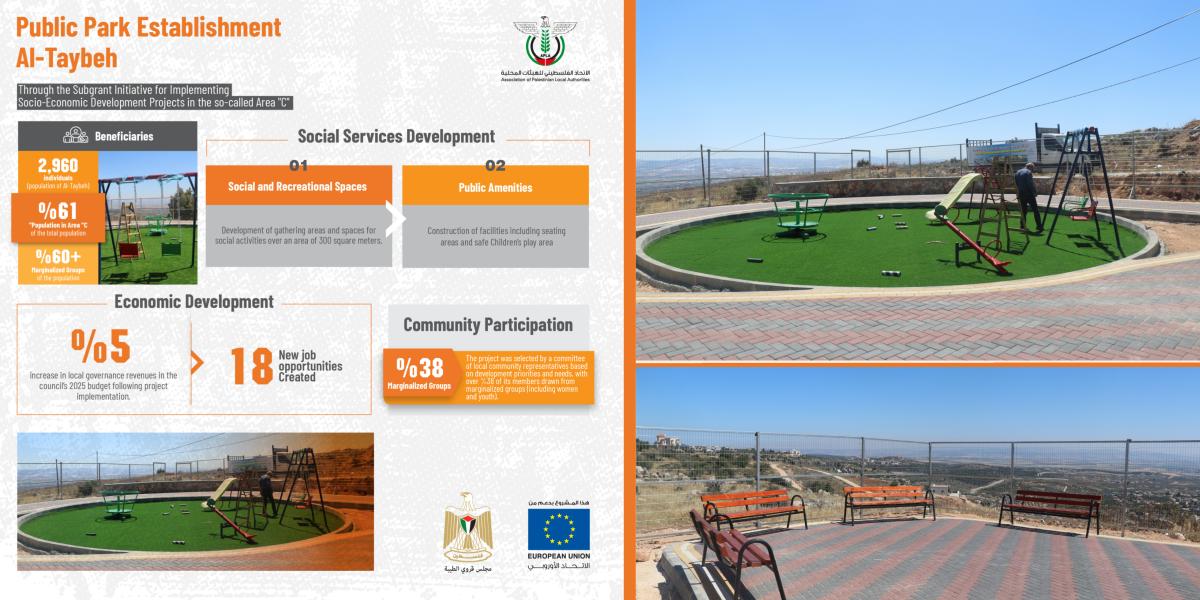Al-Taybeh | Public Park Establishment
Every land carries a story, and the story of At-Tayba is rooted in sacred history. In the Old Testament it was known as Ophrah; in the New Testament it became Ephraim, the city where Jesus Christ and his disciples once sought refuge. Centuries later, when Salah al-Din passed through, he was so struck by the generosity of its people that he exclaimed: “How good are its people!” From that day, the village carried the name At-Tayba—“the good”—a name that today stands as a symbol of its people’s resilience.
Just a stone’s throw from the Separation Wall, where movement is restricted and realities are imposed on the ground, At-Tayba stands tall. Nearly three thousand people live here, each one carrying a story of survival. More than half of them—about six in every ten—live pressed up against the wall itself, with concrete as their daily neighbor.
The challenge is not only the lack of services but the constant sense of isolation, and the shrinking of vital space. Children grew up without a safe playground; young people without the opportunities to anchor them in their land; and women and marginalized groups—six out of every ten faces in the village—remained at the edge of public life, even though they bear much of its burden.
Yet the people of At-Tayba chose to honor the name of their village. They formed a community committee where marginalized voices spoke loudly, and nearly four in every ten members were women and youth. Their demands were not grand, but they were profound: “We need a place to gather, a healthy space for our children, and jobs for our sons and daughters.”
On a plot of land barely 300 square meters—smaller than a school playground—life was revived. Children’s laughter filled the new play area, families found seats to gather, and a small kiosk began to generate 5% of the village council’s income while offering women and youth a foothold in economic life. The project created 18 jobs, and each one was more than a paycheck: it was a decision by another family to stay rooted in their land.
The park is no longer just a patch of trees and benches; it is the lung through which the village breathes, and a wall of joy standing opposite the Wall of concrete. Every tree planted drives roots deeper, every gathering in the square weaves stronger bonds.
Today, At-Tayba is more than a historical refuge—it is a living refuge of resilience. It stands as proof that frontline communities can transform isolation into space, deprivation into initiative, and that when people hold the reins of their future, their will outlasts any wall.


This project is part of the Sub-Grant Program, which is implemented by the Association of Palestinian Local Authorities (APLA) in Area C. The initiatives under this program are not merely about infrastructure improvement, but serve as practical tools to keep communities rooted in their land, expand spaces of life in the face of closure and confiscation, and turn development into a daily act of resilience that safeguards rights, memory, and existence.
funded by: the European Union and the Swiss Agency for Development and Cooperation (SDC)

 Key Indicators
Key Indicators
 Cultural Heritage
Cultural Heritage
 Public Parks
Public Parks
 Renewable Energy
Renewable Energy
